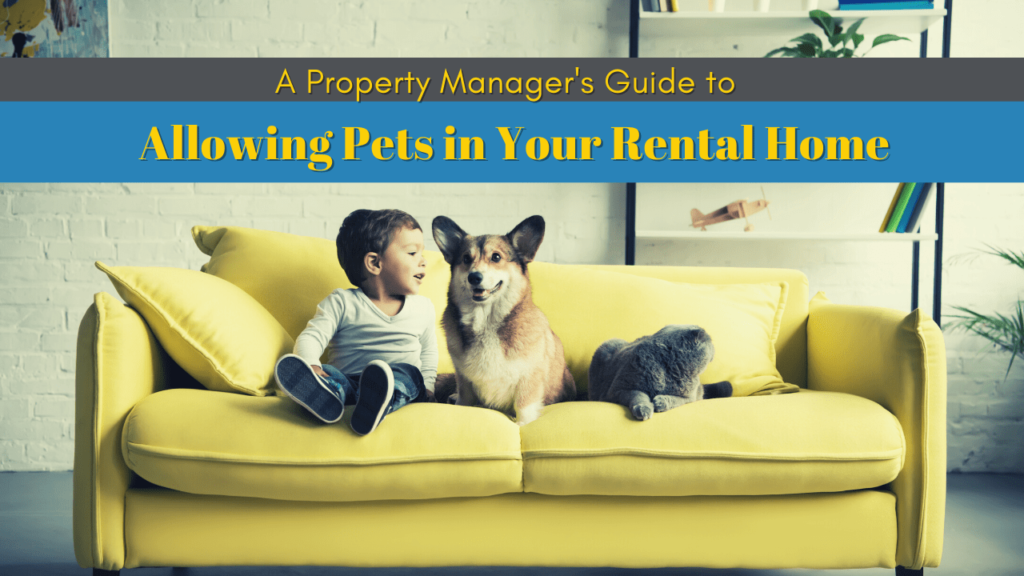
Allowing pets into your Killeen rental home will help you avoid long vacancies and frequent turnovers. Pet-friendly properties also earn more money than those that do not allow pets.
But, pets come with their own set of risks. What if a tenant’s dog bites someone? What if it’s impossible to get rid of the odors that cats leave behind? There could be fleas in your carpet fibers, scratches on your floors and walls, and countless other worst-case-scenarios.
A property management company based in Harker Heights, Shine Residential Management cares for exceptional single-family homes throughout Central Texas, including in Killeen, Temple, Belton, Copperas Cove, Salado, and Georgetown. Through our years of experience, we have rented properties to many people and their pets.
It’s understandable that some property owners would want to have a blanket no-pets-allowed policy. However, doing that will only eliminate your pool of potential tenants. It may take longer to rent your home, because a majority of Killeen tenants have at least one pet.
You can balance the risk against the benefits by creating and enforcing a clear and thorough pet policy.
Let’s take a closer look at why you should allow pets in your property and how you can protect yourself and your investment when you do.
Benefits of a Pet-Friendly Killeen Rental Property
Pet owners treat their animals like they’re part of the family. You’re not going to find many people who are willing to move into a new home without their pets. Here are some of the benefits to allowing them in your rental home.
-
Larger Killeen Tenant Pool
Let’s start with the tenant pool benefit because it’s a pretty significant one.
When you allow pets into your Killeen rental property, you will have a lot of renters and potential prospects interested in your property. Recent studies show that 70 percent of American renters have at least one pet. So, if you’re not allowing pets, you are cutting down a huge percentage of the potential tenants who will be interested in your property.
Since the pandemic, pet ownership has only grown. With more people working and studying from home, there has been a rise in pet adoptions. This shift is an important one for investors to incorporate into their rental policies.
If your property is not getting a lot of interest, it could be due to the fact that you won’t consider pets. This sets you up for a longer vacancy. As you know, vacancy is a problem. When your property is vacant for a long time, you lose rental income. You also leave an unoccupied home at risk. There’s no one to report maintenance issues and an empty home is a target for thieves and criminals.
Protect your property and reach more tenants by allowing pets or at least indicating that you’re willing to consider pets. If you say pets will be considered in your rental property marketing, you will attract all those tenants who have pets. You’re still leaving yourself open to saying no to a pet that’s too big, too young, or one of the dangerous breeds that insurance companies won’t cover.
-
Pet-Friendly Homes Retain Tenants
Here’s another benefit: Renters with pets are more likely to renew their lease agreement at the end of the lease term. This tenant retention is good for you and your investment. It keeps your annual cash flow and income consistent.
Pet owners don’t want to pay a new pet fee when they move into another home. Even finding another pet-friendly property might be challenging. So, they’re less likely to move from your home as long as they’re having a good rental experience.
Your tenants with pets are likely to stay longer. They might also be willing to sign a lease for a longer period of time. There are statistics to back this up from The Human Animal Bond Research Institute (HABRI). They put together a study with the Michelson Found Animals Foundation and found that pet-inclusive housing led to long-term residents. In fact, residents with pets stayed 21 percent longer in their rental homes than residents without pets.
-
Earning More Money by Allowing Pets
Not only do pet-friendly rentals rent faster, they also rent for more money. You can charge a pet fee per animal when tenants move in. We’ve seen pet fees as high as $300 per pet. You can also charge a monthly pet rent per animal. That’s going to increase your monthly cash flow.
Pet rent is paid every month that the tenant is living in the property with their pet. We’ve seen amounts that range from $25 per pet to $60 per pet. You’ll add this amount to the rental amount every month, giving you more income and a bit of a reserve in case you need to do cleaning or make repairs that are caused by the pets.
Pet Policies to Protect Killeen Investment Properties
When you recognize the benefits of allowing pets and you want to welcome them into your rental home but you’re still worried about the risk and the mess, you need a comprehensive pet policy. You can also set up a screening process for pets – just like you screen tenants.
Here’s what we recommend.
-
Screening Pets for Killeen Rental Properties
It starts with screening, and there are companies you can work with to conduct pet screenings. Or, you can make your own inquiries and require your own documentation. The idea is to ensure the pets are in good health and free of any diseases or pests like fleas and ticks.
Ask for vaccination and vet records. Call the vet for a two-minute chat to confirm that they see the animal regularly. When you’re conducting the tenant screening and verifying rental history, you may find yourself talking to former landlords. Take the opportunity to ask about the pets that lived in the home with the tenants. Find out if they were clean and well-behaved. Ask if there were any complaints.
-
Imposing Limits and Restrictions in your Pet Policy
In your pet policy, you can place limits on the types and numbers of pets that you’ll allow. For example, puppies and kittens are often not house-trained. So, you can say that you’ll only allow adult dogs and cats.
You can also limit the size and number of animals you’ll allow. For example, no dogs over 30 pounds is a reasonable limit to include in your pet policy. You can say that three cats are allowed or only one pet per tenant. Include limits that make you comfortable but still open your property up to more potential tenants.
-
Dangerous Dog Breeds and Insurance Requirements
Dog breeds must be addressed in your pet policy. You want to be careful of the breeds that are considered dangerous, such as Pit Bulls and German Shepherds. While tenants who own these dogs might try to convince you that they’re docile and well-mannered, many insurance companies won’t cover dangerous dog breeds. If you want to exclude these types of animals, make sure you include the list of breeds you won’t consider in your lease.
-
Include Pet Fees in Your Pet Policy
Charge a non-refundable pet fee to protect yourself against any extra cleaning or repair costs due to the pets you allow. Consider whether you want to charge pet rent as well. There are different ways to protect yourself financially when you have a tenant with pets moving into your property.
-
Hold Tenants Accountable for Pets
Your pet policy should also include all the expectations you have for how the pet will behave and be controlled. You can require that all dogs are leashed while outside. You can ask that the air filters get changed more frequently to account for pet hair. You can require professional carpet cleanings. Let your tenants know that all messes must be cleaned up indoors and outdoors.
Pets are not a protected class, and you can make as many rules and regulations as you’d like when it comes to managing how they live in your property. If you are renting out a home in a Killeen homeowners association (HOA), you will want to take a look at the bylaws and the rules and regulations provided by the association as well. They may have their own restrictions and requirements. You’ll want to make sure your tenant is aware of them and willing to comply.
Marketing a Pet-Friendly Rental Property in Killeen
 While scrolling through listings, pet owners will be looking for language that lets them know their pets are welcome or at least considered. Include information about your pet policy, and you’re more likely to hear from prospective tenants who want a showing or plan to apply.
While scrolling through listings, pet owners will be looking for language that lets them know their pets are welcome or at least considered. Include information about your pet policy, and you’re more likely to hear from prospective tenants who want a showing or plan to apply.
When you’re planning to be selective about your pets and unlikely to allow every pet that you meet, make sure you say something about pets being considered. Let applicants know that their pets will be screened, too. Ask for photos of the pet with the application so you can match the animals you find on your property to the pets that have been approved.
We’d be happy to help you screen pets and create a pet policy for your Killeen lease agreements. If you have questions about this or any other topic, please contact us at Shine Residential Management.
